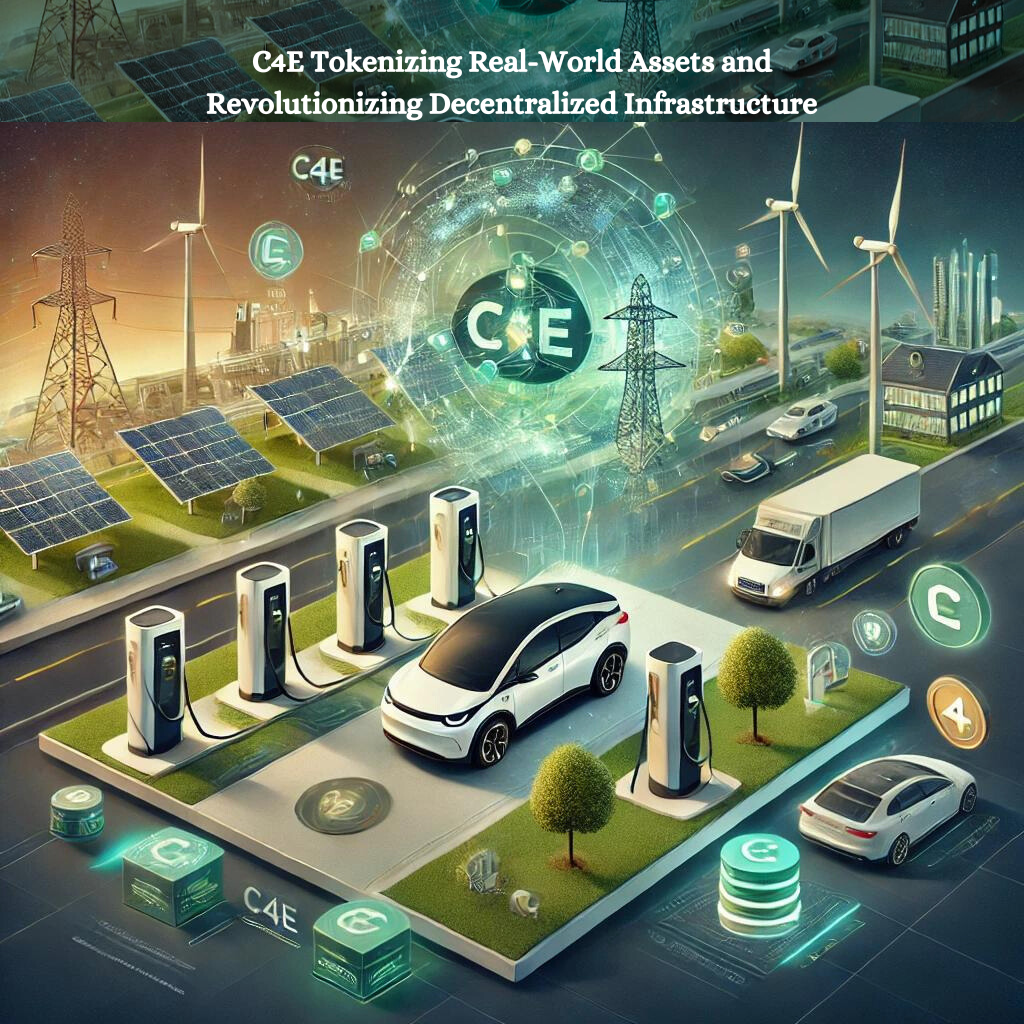
Real-world asset (RWA) tokenization has emerged as a pivotal development in the blockchain industry, bridging the gap between physical and digital assets. C4E, or Chain4Energy, is at the forefront of this revolution, using blockchain technology to tokenize energy-related assets, making them accessible and tradable on a decentralized platform.
The Power of Tokenization
Tokenizing RWAs involves converting physical assets—like real estate, commodities, or even energy infrastructure—into digital tokens on a blockchain. These tokens represent ownership or a share of the underlying asset, making them easier to trade, manage, and invest in. This process democratizes investment, allowing a broader range of participants to engage with traditionally high-barrier markets like energy, real estate, and commodities.
How C4E is Transforming Energy with DePIN and Tokenization
C4E's unique approach is centered around the intersection of decentralized physical infrastructure networks (DePIN) and RWA tokenization. By leveraging both technologies, C4E allows for the tokenization of energy assets like solar panels, EV charging stations, and renewable energy projects. This integration creates opportunities for fractional ownership, allowing small investors to own a piece of large energy projects and earn returns based on their contribution.
C4E’s Plug & Earn concept, for example, enables businesses to offer EV charging solutions using standard energy sockets without the need for complex infrastructure. This low-barrier-to-entry model incentivizes more hosts to join the network, generating passive income for them and making charging easier for EV owners.
Advantages of C4E's Tokenization Strategy
- Increased Liquidity: Tokenizing assets allows them to be traded 24/7 on secondary markets, unlocking liquidity that was previously tied up in physical infrastructure.
- Fractional Ownership: Investors can own a small portion of high-value assets, like solar farms or wind turbines, making these investments more accessible to a global audience.
- Transparency and Security: Blockchain technology ensures that all transactions and ownership records are securely stored on-chain, providing an immutable audit trail and reducing fraud risks.
Why Investors Should Care About C4E
The tokenization of real-world assets is projected to grow into a multi-trillion-dollar market by 2030. C4E is positioning itself as a leader in this space by focusing on the energy sector, which presents vast opportunities for decentralized solutions. The shift towards renewable energy and decentralized infrastructure aligns perfectly with the goals of C4E, making it a highly promising investment opportunity for both retail and institutional investors.
As more industries adopt blockchain for asset management, C4E’s approach to energy infrastructure could lead to innovative financial products like tokenized infrastructure bonds or decentralized energy trading platforms.
How to Get Involved
For investors looking to explore C4E, it’s important to first research the platform and understand its tokenomics. C4E tokens, which power the ecosystem, are available for trading on several exchanges. By owning these tokens, investors can participate in governance decisions, stake tokens for rewards, and gain exposure to the rapidly growing RWA market.
To dive deeper into how C4E is changing the landscape of decentralized energy and infrastructure, you can explore the links below:
This is just the beginning. As blockchain technology continues to evolve, C4E’s innovative approach to tokenizing energy assets will likely make it a key player in shaping the future of decentralized energy networks.